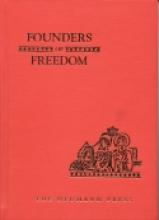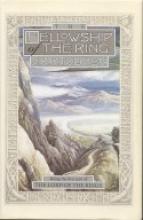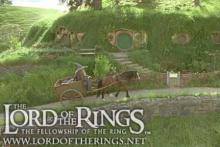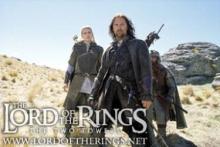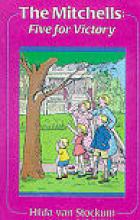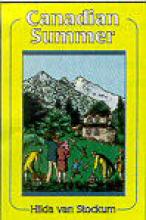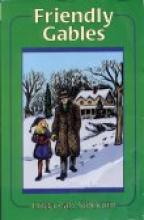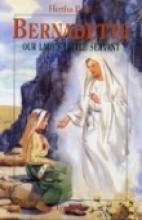No name
Founders of Freedom
Subject(s):
Grade / Age level:
Resource Type:
Review:
This first volume in the Catholic American history program, Land of Our Lady, is intended for the fourth grade. It overviews history from Creation to just before Columbus' voyage in 1492. The focus is mostly on Western History - Europe and the Middle East - but Ancient China is also touched upon. Emphasis is placed on the origins of democracy and people in history who were instrumental in its development in various forms (as a preparation for the study of American History - this year's text develops the "background"). The text is very Catholic with a great deal of attention given to Saints who had a role in history and the Catholic Church's influence on civilization. Also included between each Unit are a Marian hymn (with a black and white illustration of Our Lady) and the history of the hymn. While some more controversial issues such as the Inquisition aren't covered (which is reasonable for a 4th grade text), I was happy to see the author point out some of the good and bad of events such as the Crusades. This balanced presentation of history is more helpful for students who have to prepare themselves to defend their Faith in the future.
The text is readable and interesting (although do keep in mind that I LOVE history), but still rather textbookish. Because it is an overview, many topics are covered rather briefly and the "stories" of history aren't present. There are a rather large quantity of written problems, activities and other reviews designed to reinforce the ideas in the text. I would be inclined to only use some of the written problems and instead supplement with some "living books" (stories from History), such as those listed on our Timeline of Good History Reading.
The text is readable and interesting (although do keep in mind that I LOVE history), but still rather textbookish. Because it is an overview, many topics are covered rather briefly and the "stories" of history aren't present. There are a rather large quantity of written problems, activities and other reviews designed to reinforce the ideas in the text. I would be inclined to only use some of the written problems and instead supplement with some "living books" (stories from History), such as those listed on our Timeline of Good History Reading.
Additional notes:
This book was donated for review by Neumann Press
Reviewed by:
First reviewed:
3-2-2000
The Lord of the Rings
Subject(s):
Grade / Age level:
Review:
Reviewed by:
First reviewed:
11-17-2007
The Lord of the Rings: The Fellowship of the Ring (Movie)
Resource Type:
Review:
What a happy thing, especially after all the Harry Potter fuss, to have such a revival in interest in the great Lord of the Rings trilogy because of this new movie (if Harry Potter leads people to Tolkien, I couldn't say much against him). I really believe (and I have noticed this with children of neighbors and friends) that in the end Lord of the Rings tends to be more beloved than Harry Potter. Although Harry Potter can be a little more accessible to younger and/or less experienced readers, the Lord of the Rings is a real adventure story, whereas Harry Potter is more of a fantasy/mystery with a much smaller scope. The Lord of the Rings movies are also making the books more accessible to a new generation of fans.
Overall, Tolkien fans (who are considered rather "fussy") seem to be rather pleased with the movie, and with good reason. Although it's very difficult to turn such a complex and imaginative story into a movie, and the movie will certainly never replace the book, overall I think the movie-makers did a fantastic job. First, and most importantly, I think they captured the overall themes (the temptation of power, the reality of evil, etc.) very well. The characters are very well-cast and quite believable. As might be expected in a movie version, the plot is simplified, several characters are compressed into one, etc. The neat thing is that significant portions of dialogue are taken directly from the book and the essentials of the plot are really quite faithful to the original story. My husband and I (who have both read the books) enjoyed the movie very much. Since we were expecting the birth of a child at the time and she decided to arrive significantly past her due date, we were able to see the movie twice in the theater, which is a real rarity for us.
For those unfamiliar with the books, this first part of three books introduces us to the main characters in the story - Hobbits - and the other races of Middle Earth - dwarves, elves, men and wizards. We see the beauty of the hobbits' homeland - the Shire - and their simplicity and love of nature. We are introduced to Bilbo who discovered "the Ring" and prepares to leave it to his nephew Frodo. When Gandalf discovers the true identity of the ring - the One Ring that was forged by the evil Lord Sauron to control all living things - Frodo sets out to bring the ring to a safer place and thus begins his quest.
This movie is not intended for young children. The story is very complex and focuses on major conflicts between good and evil. Turning it into a movie without making it silly and laughable creates rather intense cinema. Happily the moviemakers sought a PG-13 rather than an R rating and thus there is almost no blood and gore and no bad language or other objectionable content. The movie does, of course, portray battle and action scenes and a number of rather frightening creatures that some young children find too scary even when reading the book. It is sometimes easier to allow younger children to watch this sort of movie when it is released to video/DVD where the entire effect is less intense and scenes may be edited at will.
 Although I think that watching the movie will lead many people to pick up the book, I think it best to read the book before seeing the movie so that one's first impressions in the imagination come directly from the book rather than another's re-creation of it. Parents, in particular, might do well to read the book before seeing the movie because, particularly if they aren't regular movie-goers, I think the violence and intensity wouldn't make much sense without being familiar with the plot and themes.
Although I think that watching the movie will lead many people to pick up the book, I think it best to read the book before seeing the movie so that one's first impressions in the imagination come directly from the book rather than another's re-creation of it. Parents, in particular, might do well to read the book before seeing the movie because, particularly if they aren't regular movie-goers, I think the violence and intensity wouldn't make much sense without being familiar with the plot and themes.
The extended version of the movie, which was released to video and DVD in November 2002, is really worth seeing. It incorporates 30 minutes of additional footage into the movie which helps make the story more understandable and enjoyable, but made the movie too long for the theatrical release.
Overall, Tolkien fans (who are considered rather "fussy") seem to be rather pleased with the movie, and with good reason. Although it's very difficult to turn such a complex and imaginative story into a movie, and the movie will certainly never replace the book, overall I think the movie-makers did a fantastic job. First, and most importantly, I think they captured the overall themes (the temptation of power, the reality of evil, etc.) very well. The characters are very well-cast and quite believable. As might be expected in a movie version, the plot is simplified, several characters are compressed into one, etc. The neat thing is that significant portions of dialogue are taken directly from the book and the essentials of the plot are really quite faithful to the original story. My husband and I (who have both read the books) enjoyed the movie very much. Since we were expecting the birth of a child at the time and she decided to arrive significantly past her due date, we were able to see the movie twice in the theater, which is a real rarity for us.
For those unfamiliar with the books, this first part of three books introduces us to the main characters in the story - Hobbits - and the other races of Middle Earth - dwarves, elves, men and wizards. We see the beauty of the hobbits' homeland - the Shire - and their simplicity and love of nature. We are introduced to Bilbo who discovered "the Ring" and prepares to leave it to his nephew Frodo. When Gandalf discovers the true identity of the ring - the One Ring that was forged by the evil Lord Sauron to control all living things - Frodo sets out to bring the ring to a safer place and thus begins his quest.
This movie is not intended for young children. The story is very complex and focuses on major conflicts between good and evil. Turning it into a movie without making it silly and laughable creates rather intense cinema. Happily the moviemakers sought a PG-13 rather than an R rating and thus there is almost no blood and gore and no bad language or other objectionable content. The movie does, of course, portray battle and action scenes and a number of rather frightening creatures that some young children find too scary even when reading the book. It is sometimes easier to allow younger children to watch this sort of movie when it is released to video/DVD where the entire effect is less intense and scenes may be edited at will.
 Although I think that watching the movie will lead many people to pick up the book, I think it best to read the book before seeing the movie so that one's first impressions in the imagination come directly from the book rather than another's re-creation of it. Parents, in particular, might do well to read the book before seeing the movie because, particularly if they aren't regular movie-goers, I think the violence and intensity wouldn't make much sense without being familiar with the plot and themes.
Although I think that watching the movie will lead many people to pick up the book, I think it best to read the book before seeing the movie so that one's first impressions in the imagination come directly from the book rather than another's re-creation of it. Parents, in particular, might do well to read the book before seeing the movie because, particularly if they aren't regular movie-goers, I think the violence and intensity wouldn't make much sense without being familiar with the plot and themes.The extended version of the movie, which was released to video and DVD in November 2002, is really worth seeing. It incorporates 30 minutes of additional footage into the movie which helps make the story more understandable and enjoyable, but made the movie too long for the theatrical release.
Additional notes:
Rated PG-13 (Violence)
Reviewed by:
First reviewed:
1-2-03
The Lord of the Rings: The Two Towers (Movie)
Resource Type:
Review:
After much anticipation, my seven year old son and I saw the Two Towers on the Saturday before Christmas. My nine year old daughter watched it with my husband the night before in order to switch off with the little ones at home. A year ago I wouldn't have expected to be taking any of my children to see the movie (because of their age), but a lot has changed since then for us. John read the entire Lord of the Rings aloud to the children over the past year. Jacinta read it, again, on her own. She and Matthew have also listened to the 13 disc BBC audio drama numerous times. They also very much enjoyed the Fellowship of the Ring movie on the "small screen". The point is that they have really attained a decent grasp of the story. In addition, my son, who doesn't like loud noises much, wore earplugs (which diminishes the intensity quite a bit) and my husband and I both did a bit of editing by simply covering their eyes with our hands. This was necessary during the previews and commercials before the movie more than for the movie itself.
Two of the toughest characters to portray - Gollum and Treebeard - were absolutely amazing. Gollum is a complex character - tortured by his desire for the ring, whom you don't know whether to hate or pity. A computer graphics generated character, he was entirely believable and pathetic in the way, I think, Tolkien intended him to be imagined. Treebeard could so easily have been a silly cartoonish character. While not without humor, he's also magnificent and ...respectable in the way that one would appreciate and admire an older gentleman who's a bit eccentric.
 There are several general things that I think remarkable about this phenomenal task of creating movies from Tolkien's beloved stories. (For those who really like movies, as my husband and I do, the Fellowship of the Ring DVD is interesting partly because of the extensive commentaries, interviews, photo galleries, etc. which provide details on both how the movies were made and what the movie-makers were trying to do.) Many of the people most intimately involved in the movie production have read the story countless times. Faithfulness to Tolkien was a major priority for them. They have referred to the books over and over again, not just in writing the screenplay, but in how the actors portray their parts. A great deal of attention and thought has gone into many, many details of the story. For example, recordings exist of Tolkien himself reading parts of his stories. Ian McKellan, who plays Gandalf, based his portrayal of Gandalf, in voice tone and expression, on these recordings. Christopher Lee, who plays Saruman, has read the books every year for decades. In addition to his excellent portrayal of the villain, he discussed parts of the book with the other actors to be sure that certain details weren't left out. The two artists most famous for illustrating editions of the Lord of the Rings, Alan Lee and John Howe, worked as art consultants on the sets and miniatures. Peter Jackson, the director, collaborated with hundreds of cast members, production members and Tolkien fans to fine tune the script and the ideas. We had a local news story here in Wisconsin about a man who was, as a hobby, an expert in Tolkien's fictional languages. He offered his services to Peter Jackson and was invited to play a part in the production. I've never heard of any project done in this kind of fashion and the final result is truly reflective of the incredible effort and labor of love that went into making these movies.
There are several general things that I think remarkable about this phenomenal task of creating movies from Tolkien's beloved stories. (For those who really like movies, as my husband and I do, the Fellowship of the Ring DVD is interesting partly because of the extensive commentaries, interviews, photo galleries, etc. which provide details on both how the movies were made and what the movie-makers were trying to do.) Many of the people most intimately involved in the movie production have read the story countless times. Faithfulness to Tolkien was a major priority for them. They have referred to the books over and over again, not just in writing the screenplay, but in how the actors portray their parts. A great deal of attention and thought has gone into many, many details of the story. For example, recordings exist of Tolkien himself reading parts of his stories. Ian McKellan, who plays Gandalf, based his portrayal of Gandalf, in voice tone and expression, on these recordings. Christopher Lee, who plays Saruman, has read the books every year for decades. In addition to his excellent portrayal of the villain, he discussed parts of the book with the other actors to be sure that certain details weren't left out. The two artists most famous for illustrating editions of the Lord of the Rings, Alan Lee and John Howe, worked as art consultants on the sets and miniatures. Peter Jackson, the director, collaborated with hundreds of cast members, production members and Tolkien fans to fine tune the script and the ideas. We had a local news story here in Wisconsin about a man who was, as a hobby, an expert in Tolkien's fictional languages. He offered his services to Peter Jackson and was invited to play a part in the production. I've never heard of any project done in this kind of fashion and the final result is truly reflective of the incredible effort and labor of love that went into making these movies.
Jackson and crew did a great job of balancing this rather dark, middle part of the story with some enjoyable comic relief (especially found in the character of Gimli the dwarf) which flowed quite well. I thought there were a few more unnecessary plot-deviations than in the first movie (particularly a significant thread involving Aragorn), but this annoyance was rather minor. We enjoyed the movie very much and look forward to its conclusion, The Lord of the Rings: Return of the King, coming out in December 2003.
Two of the toughest characters to portray - Gollum and Treebeard - were absolutely amazing. Gollum is a complex character - tortured by his desire for the ring, whom you don't know whether to hate or pity. A computer graphics generated character, he was entirely believable and pathetic in the way, I think, Tolkien intended him to be imagined. Treebeard could so easily have been a silly cartoonish character. While not without humor, he's also magnificent and ...respectable in the way that one would appreciate and admire an older gentleman who's a bit eccentric.
 There are several general things that I think remarkable about this phenomenal task of creating movies from Tolkien's beloved stories. (For those who really like movies, as my husband and I do, the Fellowship of the Ring DVD is interesting partly because of the extensive commentaries, interviews, photo galleries, etc. which provide details on both how the movies were made and what the movie-makers were trying to do.) Many of the people most intimately involved in the movie production have read the story countless times. Faithfulness to Tolkien was a major priority for them. They have referred to the books over and over again, not just in writing the screenplay, but in how the actors portray their parts. A great deal of attention and thought has gone into many, many details of the story. For example, recordings exist of Tolkien himself reading parts of his stories. Ian McKellan, who plays Gandalf, based his portrayal of Gandalf, in voice tone and expression, on these recordings. Christopher Lee, who plays Saruman, has read the books every year for decades. In addition to his excellent portrayal of the villain, he discussed parts of the book with the other actors to be sure that certain details weren't left out. The two artists most famous for illustrating editions of the Lord of the Rings, Alan Lee and John Howe, worked as art consultants on the sets and miniatures. Peter Jackson, the director, collaborated with hundreds of cast members, production members and Tolkien fans to fine tune the script and the ideas. We had a local news story here in Wisconsin about a man who was, as a hobby, an expert in Tolkien's fictional languages. He offered his services to Peter Jackson and was invited to play a part in the production. I've never heard of any project done in this kind of fashion and the final result is truly reflective of the incredible effort and labor of love that went into making these movies.
There are several general things that I think remarkable about this phenomenal task of creating movies from Tolkien's beloved stories. (For those who really like movies, as my husband and I do, the Fellowship of the Ring DVD is interesting partly because of the extensive commentaries, interviews, photo galleries, etc. which provide details on both how the movies were made and what the movie-makers were trying to do.) Many of the people most intimately involved in the movie production have read the story countless times. Faithfulness to Tolkien was a major priority for them. They have referred to the books over and over again, not just in writing the screenplay, but in how the actors portray their parts. A great deal of attention and thought has gone into many, many details of the story. For example, recordings exist of Tolkien himself reading parts of his stories. Ian McKellan, who plays Gandalf, based his portrayal of Gandalf, in voice tone and expression, on these recordings. Christopher Lee, who plays Saruman, has read the books every year for decades. In addition to his excellent portrayal of the villain, he discussed parts of the book with the other actors to be sure that certain details weren't left out. The two artists most famous for illustrating editions of the Lord of the Rings, Alan Lee and John Howe, worked as art consultants on the sets and miniatures. Peter Jackson, the director, collaborated with hundreds of cast members, production members and Tolkien fans to fine tune the script and the ideas. We had a local news story here in Wisconsin about a man who was, as a hobby, an expert in Tolkien's fictional languages. He offered his services to Peter Jackson and was invited to play a part in the production. I've never heard of any project done in this kind of fashion and the final result is truly reflective of the incredible effort and labor of love that went into making these movies.Jackson and crew did a great job of balancing this rather dark, middle part of the story with some enjoyable comic relief (especially found in the character of Gimli the dwarf) which flowed quite well. I thought there were a few more unnecessary plot-deviations than in the first movie (particularly a significant thread involving Aragorn), but this annoyance was rather minor. We enjoyed the movie very much and look forward to its conclusion, The Lord of the Rings: Return of the King, coming out in December 2003.
Additional notes:
Rated PG-13 (Violence)
Reviewed by:
First reviewed:
1-2-03
The Mitchells: Five for Victory
Subject(s):
Grade / Age level:
Review:
This is a charming and thoughtful story of an American family of five children during World War II (based on Hilda Van Stockum's own family) whose father is away at war. The family is very real with plenty of worries and troubles...but they manage to find joy with each other. For independent reading, it could be one your children's first full-length chapter books.Wit and wisdom make it a can't miss for adults as well (a perfect read-aloud). This has been a favorite with our family (for children as young as four or five) for many years.
Washington D.C. is an exciting place to grow up and the children are enchanted with pets, clubs and a mysterious girl who has just moved in down the street. Mother's attempts to take in boarders and a visit from Uncle Jim and "Mr. Jenkins" keep them busy while Father is away. Pets and babies are particularly memorable characters.
There is an aspect of the story that might be troubling for young children sensitive about adoption. A neighbor who considers adopting a war refugee decides not to because the child doesn't get along with the lady's son. The fate of adopted children is discussed rather carelessly by this lady (in terms of "well, my son has to come first") and the mother of the Mitchells doesn't have any good comebacks to resolve the issue. The story resolves nicely, however, as the girl ends up finding her grandfather, but this segment might need a little explanation. My sister-in-law (who has two adopted children) found the issue troubling and put the book aside until her children were older.
Washington D.C. is an exciting place to grow up and the children are enchanted with pets, clubs and a mysterious girl who has just moved in down the street. Mother's attempts to take in boarders and a visit from Uncle Jim and "Mr. Jenkins" keep them busy while Father is away. Pets and babies are particularly memorable characters.
There is an aspect of the story that might be troubling for young children sensitive about adoption. A neighbor who considers adopting a war refugee decides not to because the child doesn't get along with the lady's son. The fate of adopted children is discussed rather carelessly by this lady (in terms of "well, my son has to come first") and the mother of the Mitchells doesn't have any good comebacks to resolve the issue. The story resolves nicely, however, as the girl ends up finding her grandfather, but this segment might need a little explanation. My sister-in-law (who has two adopted children) found the issue troubling and put the book aside until her children were older.
Perspective:
Catholic
Reviewed by:
First reviewed:
12-12-05
Canadian Summer
Subject(s):
Setting:
Grade / Age level:
Review:
Canadian Summer continues the story of the Mitchell Family (this is the second book in the series) several years after World War II. Baby Catherine has joined the family. Father is back from the war and has moved to Quebec for his job. He has difficulty finding housing for the family, but finally makes arrangements and sends Mother, Granny and the children up on the train. Upon arriving, the ladies are shocked to find that accomodations consist of a remote ski cabin lacking electricity or running water. Doctors and stores are many miles away and transportation is nearly impossible. Wild animals and a big lake worry Mother, but intrigue the children. Of course they discover the pleasures and difficulties of rural life and have many interesting and humorous adventures.
Hilda Van Stockum is a gifted storyteller whose motherly (and grandmotherly) experience is evident in all of her books. The little details and stories, so grounded in the truth and reality of large loving families, are just plain wonderful. These books are highly recommended.
Hilda Van Stockum is a gifted storyteller whose motherly (and grandmotherly) experience is evident in all of her books. The little details and stories, so grounded in the truth and reality of large loving families, are just plain wonderful. These books are highly recommended.
Perspective:
Catholic
Reviewed by:
First reviewed:
12-12-05
Friendly Gables
Subject(s):
Setting:
Grade / Age level:
Review:
Friendly Gables is the final book in the Mitchell's Series and our favorite of the bunch.The family has recently settled into a large, comfortable house in Quebec. Mother has just given birth to twins and a cranky nurse comes to help. The children are adjusting to life in Canada - including French schools and a boy who's itching to pick a fight with "Yankee" boys.
Six-year old Timmy has my children in fits of laughter every time they hear about the toothache in his tummy and his exclaims of "Good News!" They are enchanted by the Mitchell's story-telling games, their secret-hideaway in the attic and their twin baby brothers. There are of course many humorous adventures and many wonderful tidbits about family life. Despite frustrations and set-backs, in the end they see that kindness is the best policy.
This is the kind of story that we pick up when we're having a bad day, read a chapter or two aloud, and feel much better afterwards.
Six-year old Timmy has my children in fits of laughter every time they hear about the toothache in his tummy and his exclaims of "Good News!" They are enchanted by the Mitchell's story-telling games, their secret-hideaway in the attic and their twin baby brothers. There are of course many humorous adventures and many wonderful tidbits about family life. Despite frustrations and set-backs, in the end they see that kindness is the best policy.
This is the kind of story that we pick up when we're having a bad day, read a chapter or two aloud, and feel much better afterwards.
Perspective:
Catholic
Reviewed by:
First reviewed:
12-12-05
The Sally Series
Away Goes Sally, Five Bushel Farm, The Fair American, The White Horse, The Wonderful Day
Subject(s):
Setting:
Grade / Age level:
Review:
The Sally Books by Elizabeth Coatsworth
Away Goes Sally (pgs 117), Five Bushel Farm (pgs 142), The Fair American (pgs 134), The White Horse (pgs 168), The Wonderful Day (pgs 139)
In our house, we always have at least two read-alouds going: one that I read to the kids during the day and the other in the evening that Dad reads to the kids before bed. We do this year-round, so even in the summer-time we’re doing our read-alouds. My kids particularly like a series of books read to them – either books by the same author, books about the same characters or books about the same theme.
Just as we finished our “regular” school year this year, we received the Sally series by Elizabeth Coatsworth. We liked this series so much, we have talked Dad into reading them again at night later this summer!
Sally, an indomitable orphan growing up in the state of Maine during the 1790s with aunts and uncles, is a wonderfully drawn character whose “Pollyanna” attitude toward life never seems fake, but rather that of a girl who has a warm heart, living in a loving family. These books span just a few years but include bits of information about the French Revolution and the Barbary pirates marauding the Mediterranean. We learned so much not only about rural life “back then” but these books also set us off on rabbit trails to learn about the French Revolution, the French-Indian Wars, and the African pirates and the despotism of the sultans of the era.
The first book, Away Goes Sally, sets the stage for the other books. It’s 1790 and 10-year-old Sally lives with her aunts: Nannie (the eldest and thus, in charge and very domineering), Esther (the youngest), Deborah (the quiet, shy, amenable aunt). Two uncles are also in the house: Joseph (head of the household) and Eben (lazy but lovable). The five adults, all siblings, work hard to give Sally a life full of love and faith in Massachusetts. A cousin invites the family to immigrate to the “wilds of Maine” where land is abundant and fertile. Exactly how Uncle Joseph gets Aunt Nannie to move is the plot – and did we wish we were Sally along for the ride!
Five Bushel Farm starts out in Maine with Sally’s relatives, the Hallets. Cousin Ephraim has found an orphan who needs love and brings him into his house, which is anything but loving. Once Sally and her aunts and uncles get settled in Maine, they bring the orphan to their loving home as one of the aunts goes off to marry. Friendly Native Americans and building a farm are described in great detail; finding the perfect spot for their farm, and the reason behind the name of the book, create a picture of putting down roots in more ways than one.
The French Revolution comes into play in the third book, The Fair American. Pierre, the son of a courtier, must flee his family estate just before villagers, fired by revolutionary fever, set it ablaze. Escape from France means boarding a ship where we finally re-meet Sally and Andrew. I loved the way Coatsworth linked the French Revolution to peace-filled America.
A year after the adventures aboard the Fair American, Sally and Andrew convince Aunt Nannie to allow Sally to set sail again, this time for Italy. The White Horse opens with Sally and Andrew sailing into the Mediterranean on a seemingly easy voyage. An easy voyage until the ship is attacked by pirates, the captives taken to Morocco, and imprisoned in a sultan’s palace. How the characters co-exist with the Muslims in a sultan’s palace is the point of the novel. Sally’s love of life helps all around in these trying times and the conclusion is exciting in this, the longest book of the series.
The series ends with The Wonderful Day. Sally is about 16 or so and finding it hard to be the “lady” Aunt Nannie would like her to be. Still full of love and life, Sally starts the day with great optimism which quickly turns to dismay when Sally discovers that her Uncle Joseph is in financial trouble. “Saving the day” is Sally’s job as the day and troubles compound. This book brings up an interesting idea of trust, honesty and how easy it could be to dupe those who believe everyone is as honest as they are.
This series is suitable for independent readers about age 8 and up. It proved a great read-aloud series for my 6 and 10 year old boys and my 9 year old daughter. We all loved the books and they fit well with our study of American history this year, reinforcing what we learned.
Reviewed by:
First reviewed:
6-18-2009
Bernadette, Our Lady's Little Servant
Subject(s):
Setting:
Grade / Age level:
Review:
In the consistent style of the Vision Series of non-fiction Catholic stories for young people, the author presents a very engaging account of the important story of Our Lady's appearnces to Bernadette Soubirous - probably the poorest and simplest child in the small town of Lourdes, France. Bernadette's beautiful devotion is inspiring and her stubborn honesty is refreshing. More important, however, is Our Lady's message and her profound effect on those who come to her out of devotion and sometimes only curiosity. Many people who have visited the famous spring at Lourdes have experienced miraculous cures, but there are many more miracles that can be seen only within the human heart.
Perspective:
Catholic
Reviewed by:
First reviewed:
11-16-99

